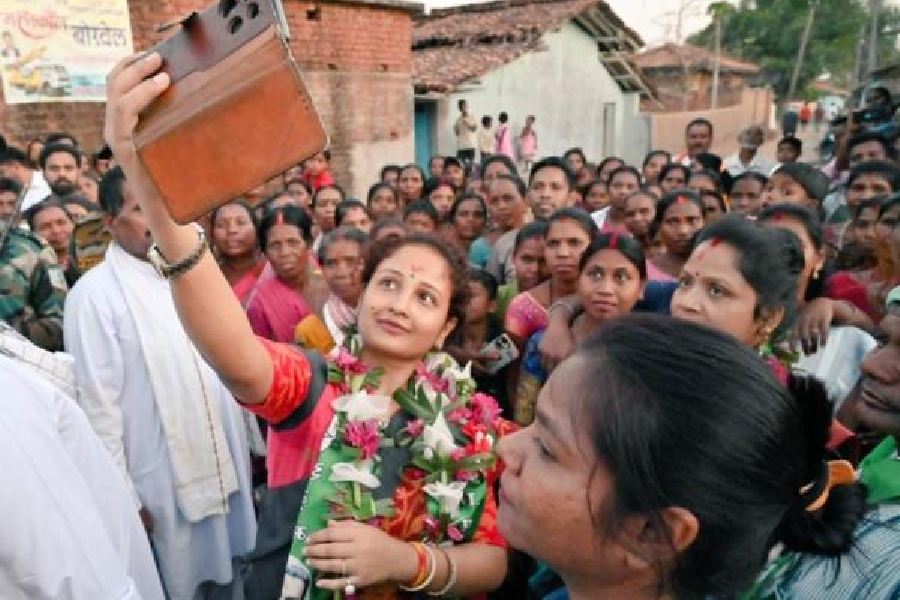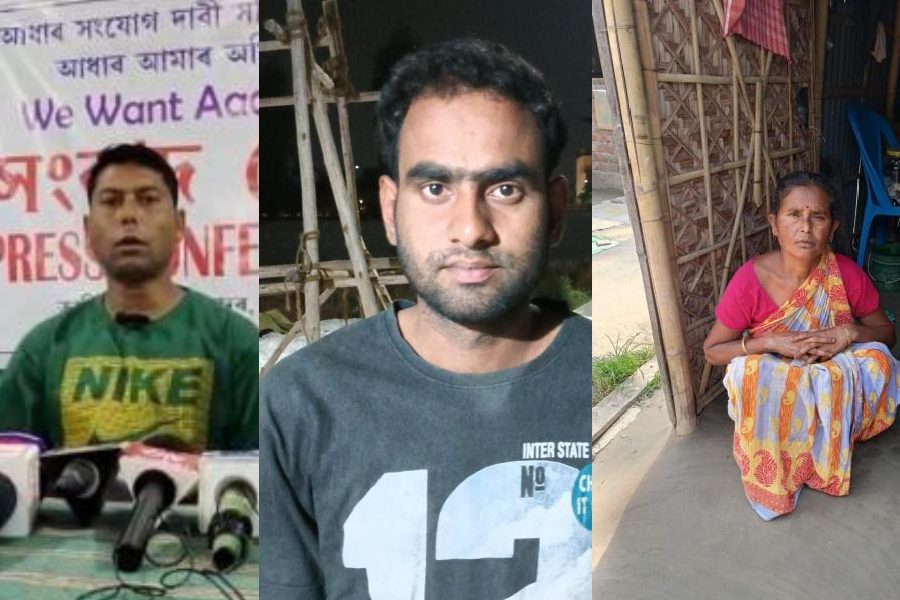Whether he works with fabric or with paper, with wood or just paint, Debasish Mukherjee’s objects and images seem to track the shifting topographies of Time unveiling the dialectics of reality. The apparent generates tantalizing hints of the unseen. As though the narrative being revealed trails prologues, sub-plots and detours still in hiding. Behind, beneath and beyond the contours and surfaces made visible. You feel that what you see isn’t quite complete: like reality, it’s just one passing dimension that echoes with the unstated.
Perhaps that’s the reason why the recent exhibition of this Delhi-based artist that Akar Prakar hosted online as part of the TAP initiative is called River Song. Since Varanasi was where he studied art, the notion of a river’s continuous becoming, its ceaseless motion, may have given rise to the sense that the apparent is illusory, nothing is static or final. The eponymous work here is a correlative to this concept, as its long, narrow off-white rug falls on a platform and ripples down its length. A band of red weave running along the middle and spilling out messily makes you wonder: is it just the flotsam of flowers devotees offer, or is it blood? Are the two inter-related? And is faith often poised between virtue and violence?
More captivating is Portrait 1 in which the digital print of a seated girl rests on a stack of fabric, the image cut up by its horizontal folds (picture). Fabric becomes, with its folds, wrinkles and quality, both a signifier of socio-economic connotations and a tactile landscape. The teenage girl in the period portrait cited is like an apparition, sitting with a pensive resignation though she’s all dressed up — perhaps for a studio photo for a marriage negotiation? — in an outsized zari-embroidered blouse and jewellery. The pillar of stacked cloth is an intimidating counterpoint to the girl’s frailty, predicting the weight of household chores that await her; but it also refers to the quaint practice that women once had of hiding letters and money between layers of clothes. On another level, it brings up a larger context: the key role that Bengal textiles played in British imperialism after Plassey, linking the image to history.
Portrait 2 is as riveting, with its cellular, hive-like structure, monstrous and strange, burgeoning out of a cupboard with a ravenous life force that threatens to breach barriers. The cupboard as an object of identity, shielding what’s private and precious from prying public eyes, recurs in Portrait of a Memory where the smooth surface of an architectural column is disintegrating, exposing the raw masonry beneath. This mournful metaphor for lost homes brings up the irretrievable loss of time, particularly the Eden of childhood. In his Portrait of a Tree, a withered trunk snakes up, no branches or leaves, while a shroud winds around it in tight gnarls to become something of an epitaph.
Time as a mirror of endless flux is captured cogently in 22 Moons. Their embroidery hoops stress the continuity of a circumference even as the terrain within them is battered with cracks that keep changing. As do the hands of a clock; as does the moon. Another remarkable series is Indigo. Infirm lines and fragmented shapes submerged in rich cobalt blue, ashen smudges and scraps of other acrylic tones wrestle through the fevered texture of the teased, creased and torn rice paper. This revisit of water bodies compels a return to the Ganga, presumably, because its floating steps recall the ghats, and seems to hold up the timeless river as a fragile, polluted ecosystem, a hostage to decay and, thus, to Time.










